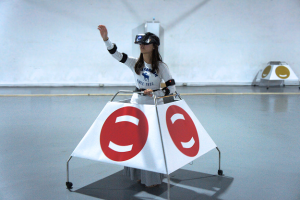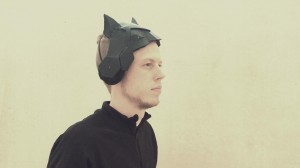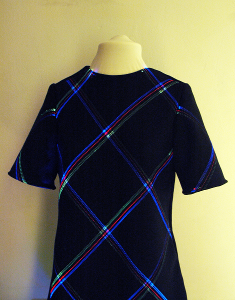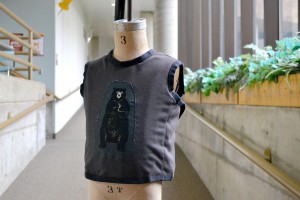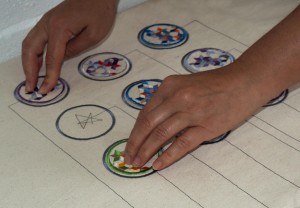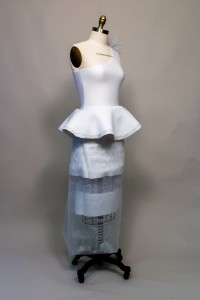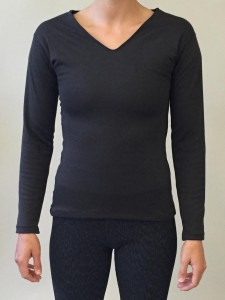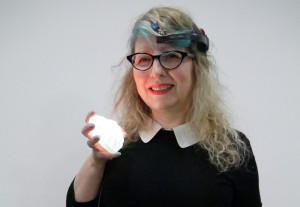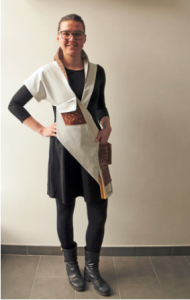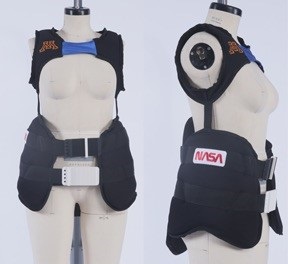The exhibition took place on Wednesday, September 14 from 6:30pm to 7:30pm and during the lunch breaks on September 15 and 16 in the Sebastian Münster Saal on the second floor (1. OG) of the Stadhalle Heidelberg.
Exhibition prizes are generously provided by:
Awardees
Functional
Interactive Workwear: Smart Maintenance Jacket
Aesthetic
Solar Shirt – Design of an Environmental Awareness Wearable
Fiber Arts
Programmable Plaid: The Search For Seamless Integration In Fashion And Technology
Program
Step In and Out of the Dreams: Toward an Immersive and Interactive Virtual Experience of Dreams
Ya-Lun Tao , National Chengchi University, Taipei, Taiwan
Chun-Feng Liao , National Chengchi University, Taipei, Taiwan
Hsuan Huang , National Chengchi University, Taipei, Taiwan
Ya-Wen Su , National Chengchi University, Taipei, Taiwan
Yo-Ja Lin , National Chengchi University, Taipei, Taiwan
Pin-Hsin Chen , National Chengchi University, Taipei, Taiwan
Tzu-Chieh Tsai , National Chengchi University, Taipei, Taiwan
This work is a combination of art and technology, implemented using wearable devices and virtual reality technology, which allows us to provide immersion and interactive dreaming experiences simultaneously to a group of people. By combining interactive narrative with wearable technology and VR, we expect to bring individuals into group interaction, allowing participants to roam freely in illusive dreams while they walk in the physical space. Meanwhile, we present the WISE platform, which is a full-stack wearable hardware and software infrastructure developed by our team that facilitates this work.
Superhearo: Sensory Augmentation for Your Friendly Neighborhood Vigilante
Alex Ryan , Georgia Institute of Technology
Katherine Kenna , Georgia Institute of Technology
Superhearo is a head-mounted wearable that augments the perception of quiet and distant sounds for a distinctive user group – vigilantes. Inspired by superhero characters, the device has a dark, sleek aesthetic. It has two modes of use – one for everyday wear and another for fighting crime. A set of small microphones in the mask amplify soft sounds for the user, while haptic feedback is used to indicate the direction of the sound. Nearby partners receive the same information at a lower resolution through LEDs embedded on the mask. Superhearo is uniquely built for the vigilante.
Programmable Plaid: The Search For Seamless Integration In Fashion And Technology.
Elizabeth Bigger , Jorge and Esther, Barcelona, Catalunya, Spain
Luis Fraguada , Jorge and Esther, Barcelona, Catalunya, Spain
Programmable Plaid celebrates traditional tartan patterns and their design parameters, as well as the numerous technological achievements in woven textiles. The designers propose a woven textile with the capability to illuminate threads in both warp and weft directions. Developing a new tartan pattern and fabrication technique focused on the textile is a response to the lack of purpose-made electronic components for wearables (arguably a use case which has just started to be considered by electronic component manufacturers). The textile is woven into a garment which becomes a component of a tartan pattern generating system which searches the space of all registered tartans in order to find relevant, but yet unregistered tartan color and thread count combinations from a variety of inputs either embedded on the dress, or from a mobile phone.
Active “Hugging” Vest for Deep Touch Pressure Therapy
Julia Duvall , University of Minnesota
Nicholas Schleif , University of Minnesota
Lucy Dunne , University of Minnesota
Brad Holschuh , University of Minnesota
Individuals with Autism Spectrum Disorder and ADHD often seek out deep touch pressure (DTP). Weighted blankets, inflatable vests and other garments have been used for DTP, but each suffers from significant limitations. Our alternative design uses shape memory alloy (SMA) springs that contract when heated to create a children’s deep pressure vest that can constrict on command, while being simultaneously low profile and adjustable. The garment can be controlled via wireless remote, allowing wearer self-adjustment and enabling the child’s parent, guardian, or occupational therapist (OT) to give a comforting “hug” potentially from anywhere in the world.
Touchplay: Crafting Material Affinities
Lucie Hernandez , Falmouth University
Touchplay invites people to handle, move and position fabric discs through the design and structure of an embroidered fabric surface. Each disc has been digitally embroidered using colour, pattern and texture to encourage play and discovery through familiar actions.
Fabric surface and discs have been enhanced with conductive thread and resistors to create elements that can be recognised in an electronic circuit. Sound is triggered when discs create a connection in response to their position. The piece incorporates a small computer that stores sound clips and controls the behaviour of the piece that is activated in response to touch.
Interactive Workwear: Smart Maintenance Jacket
Berit Greinke , Universität der Künste, Berlin, Germany
Vivien Helmut , Telekom Innovation Laboratories
Nicole Guetl , Universität der Künste, Berlin, Germany
Daniela Wittmann , Universität der Künste, Berlin, Germany
Christian Pflug , Universität der Künste, Berlin, Germany
Katharina Bredies , Universität der Künste, Berlin, Germany
Jennifer Schubert , Universität der Künste, Berlin, Germany
Hans-Werner Bitzer , Telekom Innovation Laboratories
Gesche Joost , Universität der Künste, Berlin, Germany
The Industry 4.0: Smart Maintenance Jacket was developed as a collaborative project between Design Research Lab at Berlin University of the Arts and Telekom Innovation Laboratories.
The aim of the Smart Maintenance Jacket was to explore benefits that Wearable Technology can bring to maintenance work in industrial settings, and illustrate how networked Wearables can play a role for telecommunication providers in the near future. While it was important to design and build a functional, the focus was to improve user acceptance by applying fashion design principles for garment construction.
Fleurtech: Transformable Smart Dress
SueBin Lee , Fashion Design and Technology Lab, UC Davis
Helen Koo , Fashion Design and Technology Lab, UC Davis
Jasmine Zhou , Fashion Design and Technology Lab, UC Davis
Fleurtech is a smart dress that can automatically change the length of the dress using servo motors and Arduino microprocessor boards. The dress can be a long or a mini dress in one item that allows to use in varied contexts and worn by people with different body sizes. This transformable dress is expected to provide flexibility and versatility in design and uses that can ultimately extend the lifespan of the product. All electronic components are detachable for washing and drying the dress.
StressSense: Skin Conductivity Monitoring Garment with a Mobile App
Helen Koo , Fashion Design and Technology Lab, UC Davis
Ivan Hebrio , Modlab
Megan Johnston , Fashion Design and Technology Lab, UC Davis
Nicholas Husein , Fashion Design and Technology Lab, UC Davis
Kris Fallon , Modlab
StressSense is smart clothing made of fabric sensors that monitor the stress level of the wearers. The fabric sensors are comfortable, allowing for long periods of monitoring and the electronic components. All electronic components are waterproof and detachable for ease of washing and drying. This garment is expected to be beneficial for people who have a lot of stress in their daily life and who care about their mental health. It can be also used for people who need to control their stress level critically, such as analysts, stock managers, athletes, and patients with chronic diseases and disorders.
AnemoneStarHeart: An Emotive Wearable
Rain Ashford , Goldsmiths College, University of London, London, UK
AnemoneStarHeart is a heart-shaped pendant created for visualising and displaying EEG data between couples, close friends and family, or for the wearer’s relaxation or productivity monitoring purposes. Data from an EEG headset is processed and mapped to RGB LEDs inside the pendant, which change colour and glow accordingly. This device was created as an iteration of my practice creating physiological sensor wearables for social usage. Its design and development was informed by feedback from participants of focus groups and field trials who were interested amplifying their physiological data, but for private usage rather than wearing in public social and formal situations.
Solar Shirt – Design of an Environmental Awareness Wearable
Paula Roinesalo , University of Lapland, Rovaniemi, Finland
Lasse Virtanen , University of Lapland, Finland
Tuomas Lappalainen , University of Lapland, Rovaniemi, Finland
Anu Kylmänen , University of Lapland, Rovaniemi, Finland
Jonna Häkkilä , University of Lapland, Rovaniemi, Lapland, Finland
Solar Shirt is a wearable computing concept in the area of sustainable and ecological design. It detects the level of noise pollution and illustrates it with a garment-integrated display. In addition, the design concept utilizes printed electronic solar cells as part of the garment visual design, illustrating a design vision towards zero power wearable computing. Based on the old traditions of Northern Scandinavia, Solar Shirt uses reindeer leather as the main material, giving a soft and luxurious feeling to the garment. Solar Shirt derives its inspiration from Arctic Design, reflecting pure nature, simplicity, and silence of a snowy world.
Self Adjusting Wearables: Variable Control through a Shape-Memory Latching Mechanism
Megan Clarke , University of Minnesota
Lucy Dunne , University of Minnesota
Bradley Holschuh , University of Minnesota
Shape memory alloy (SMA) wire actuator “springs” can be used to create self-adjusting elements in garments. These can include self-adjusting medical compression garments and braces, adaptive fasteners for individuals with limited mobility, and adjustable protective clothing. While SMA actuators compress and adjust the garment, once disconnected from a power source they are easily stretched out from their compressed state. To address this issue, a latching mechanism was developed to secure the SMA actuators in place. The objective of this latching mechanism is to provide a type of closure that can provide both variable control and means to “lock” SMA actuators in place after the power source has been removed.


